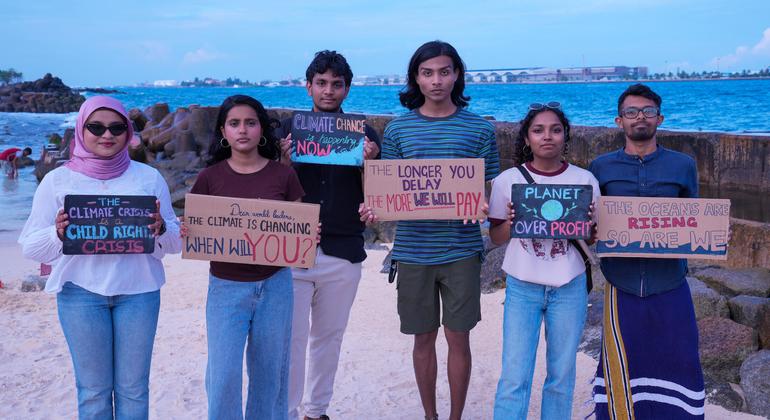The 2023 Emissions Gap Report, released on Monday by the UN Environment Programme (UNEP), carried a clear message – unless countries step up climate action and deliver more than promised in their 2030 pledges, the world is heading for a 2.5-2.9°C temperature rise above pre-industrial levels.
A broken record
Presenting the report from Nairobi, UNEP Executive Director Inger Andersen said that no person or economy is being left untouched by climate change, underscoring the urgent need to “stop setting unwanted records on greenhouse gas emissions, global temperature highs and extreme weather.”
“We must instead lift the needle out of the same old groove of insufficient ambition and not enough action, and start setting other records: on cutting emissions, on green and just transitions and on climate finance,” she emphasized.
To get back on track for the 2°C temperature rise above pre-industrial levels, emissions must be cut by at least 28 per cent compared to current scenarios. Bringing it to within the 1.5°C limit will require a 42 per cent cut.
If nothing changes, in 2030, emissions will be 22 Gigatonnes higher than the 1.5°C limit will allow – approximately the total current annual emissions of the United States, China and the European Union (EU) combined.
Bridging continents
Ms. Andersen’s message, from Africa, received unequivocal support on the other side of the world, in New York, where Secretary-General António Guterres issued a powerful appeal to world leaders.
“The emissions gap is more like an emissions canyon – a canyon littered with broken promises, broken lives, and broken records,” he said, stressing that change must begin at the top.
“All of this is a failure of leadership, a betrayal of the vulnerable, and a massive missed opportunity.”
Reiterating that renewables have never been cheaper or more accessible, he urged leaders “to tear out the poisoned root of the climate crisis: fossil fuels.”
He called on countries to commit to phasing out fossil fuels with a clear time frame aligned to the 1.5°C limit, as well as for those that gave yet to do so, to announce their contributions to the Green Climate Fund and the new Loss and Damage fund to “get it off to a roaring start.”
Sand flows from a child’s hand like through an hourglass. In southwestern Ethiopia, drought worsened by climate change is threatening crops and livestock, pushing the population to the brink.
Stocktake at COP28
The appeal comes with just ten days to go before the COP28 climate change conference in Dubai gets underway, where the first Global Stocktake of the Paris Agreement implementation is to conclude and inform the next round of National Determined Contributions (NDCs) that countries should submit in 2025, with targets for 2035.
Global ambition in the next round of NDCs must bring greenhouse gas emissions in 2035 to levels consistent with 2°C and 1.5°C pathways.
In the most optimistic scenario, where all conditional NDCs and net-zero pledges are met, limiting temperature rise to 2.0°C could be achieved.
However, net-zero pledges are not currently considered credible: none of the G20 countries are reducing emissions at a pace consistent with their net-zero targets. Even in the most optimistic scenario, the likelihood of limiting warming to 1.5°C is only 14 per cent.


